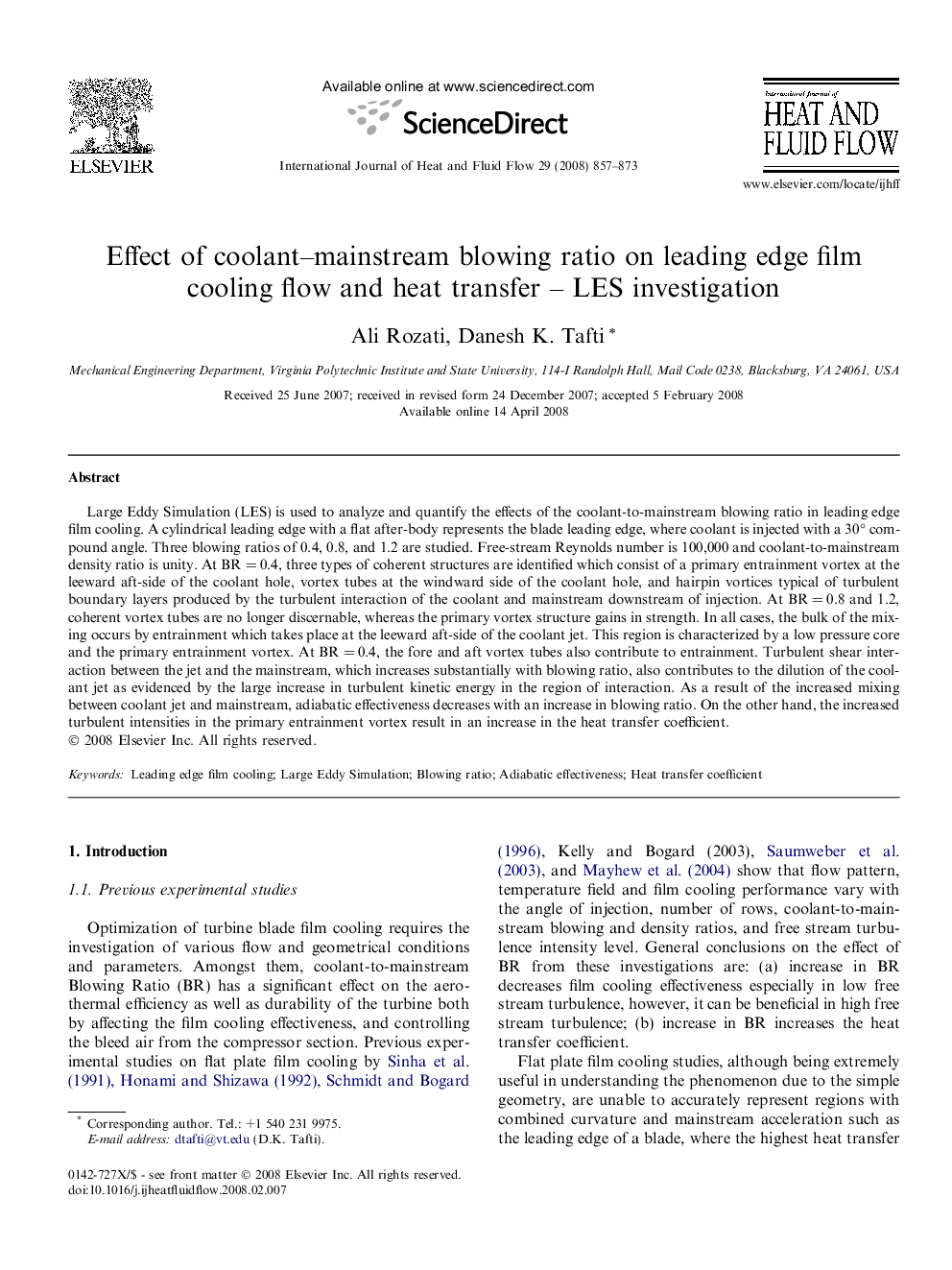| کد مقاله | کد نشریه | سال انتشار | مقاله انگلیسی | نسخه تمام متن |
|---|---|---|---|---|
| 655827 | 1457669 | 2008 | 17 صفحه PDF | دانلود رایگان |

Large Eddy Simulation (LES) is used to analyze and quantify the effects of the coolant-to-mainstream blowing ratio in leading edge film cooling. A cylindrical leading edge with a flat after-body represents the blade leading edge, where coolant is injected with a 30° compound angle. Three blowing ratios of 0.4, 0.8, and 1.2 are studied. Free-stream Reynolds number is 100,000 and coolant-to-mainstream density ratio is unity. At BR = 0.4, three types of coherent structures are identified which consist of a primary entrainment vortex at the leeward aft-side of the coolant hole, vortex tubes at the windward side of the coolant hole, and hairpin vortices typical of turbulent boundary layers produced by the turbulent interaction of the coolant and mainstream downstream of injection. At BR = 0.8 and 1.2, coherent vortex tubes are no longer discernable, whereas the primary vortex structure gains in strength. In all cases, the bulk of the mixing occurs by entrainment which takes place at the leeward aft-side of the coolant jet. This region is characterized by a low pressure core and the primary entrainment vortex. At BR = 0.4, the fore and aft vortex tubes also contribute to entrainment. Turbulent shear interaction between the jet and the mainstream, which increases substantially with blowing ratio, also contributes to the dilution of the coolant jet as evidenced by the large increase in turbulent kinetic energy in the region of interaction. As a result of the increased mixing between coolant jet and mainstream, adiabatic effectiveness decreases with an increase in blowing ratio. On the other hand, the increased turbulent intensities in the primary entrainment vortex result in an increase in the heat transfer coefficient.
Journal: International Journal of Heat and Fluid Flow - Volume 29, Issue 4, August 2008, Pages 857–873